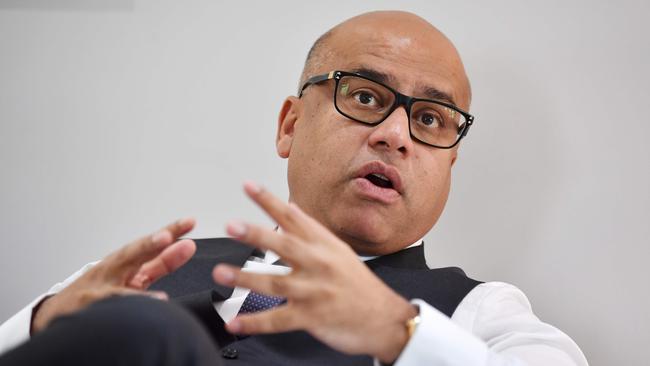Car-making to return to Australia with EV production
GFG Alliance is committed to launching “this year” with an electric city runabout.

Car-making is coming back to Australia with one company committed to launching “this year” with an electric city runabout expected to be its debut model.
Australia was an ideal size for the project which would go ahead regardless who wins government in May, industrialist Sanjeev Gupta of the GFG Alliance said this week.
Mr Gupta, who has previously floated the possibility of electric vehicle (EV) production here and emerged as a potential buyer for the Holden’s Adelaide factory site, confirmed to The Australian that plans would be unveiled “in the next few months”.
“We’re committed to launching an EV platform in Australia, we’re working very hard on a couple of options and we hope to announce more detail on that very soon,” he said.
“We’ll definitely be launching a car within this year.”
Everything from SUVs to light commercials was being discussed but Mr Gupta said the move to electric vehicles would spur demand for city runabouts and he was keen to explore the idea.
“The concept of a lighter car, a cheaper car that’s more affordable and accessible to everybody that’s meant for city travel is something which I think sooner or later — especially with electric cars — will take off,” he said.
GFG was collaborating with Gordon Murray Design, a UK outfit led by a former sports car and Formula 1 designer, which has an electric city car design ready to go.
The T. 27, which dates from 2011, is smaller than the Smart car made by Daimler and driven by a small electric motor and battery. It showcases a production method called iStream, which is less complex than conventional assembly.

“This is not a traditional car — it’s a tubular chassis, it’s composite panels and far, far fewer components — so it’s much easier to produce,” Mr Gupta said.
GFG strategic projects director James Baulderstone said the flexibility of iStream and simplicity of EVs made break-even possible at 10,000-15,000 units, with the eventual target about 30,000 a year across a range of models.
“Once you’ve got the chassis design, you can choose which body type you put on … with relatively little additional cost,” he said.
Mr Gupta said the project aimed to use infrastructure left by the previous car industry and while it was too soon to say how many jobs would be involved, the target was 50 per cent local content.
Exports might be possible eventually but the Australian market on its own was “large enough”.
Labor leader Bill Shorten has set a 2030 target for half of new cars to be EVs and supports a return of car making using the technology.
Most industry observers rule out a comeback for large-scale vehicle assembly but say niche or short-run production might be possible.
“The sort of manufacturing we saw four-to-five years ago — I don’t see that returning to Australia,” said Deloitte car-manufacturing specialist Damon Cantwell.
However, he said the region’s emerging premium market might pay for a high-quality Australian built-vehicle and any project would be unlikely to add up on domestic demand alone.
“You would need to be considering something that has an export component from day one,” he said.
Other hurdles to making an affordable EV include the high cost of batteries, with a recent study by Boston Consulting Group finding they account for a third of the price, with electric drivelines three times more expensive to make than internal combustion engines.
The cheapest EV available now is the Hyundai Ioniq, which arrived late last year starting from $44,900 while its closest rival, the new Nissan Leaf due in August, costs $49,990.
But most new car buyers spend less than $40,000.
Cost has proved a barrier to take-up, with just a few thousand EVs among the 1.1 million new cars bought every year and, unlike in other countries, no incentives to boost demand.
Mr Gupta said batteries were getting cheaper all the time and the company was looking for a strong policy platform rather than subsidies.
However if GFG does decide on a city car, it will launch into a segment that has failed to gain traction in Australia.
Demand has slumped from almost 23,000 in 2013 to less than 8000 last year, and the category’s best-known product, the Smart car, was withdrawn a few years ago.
Smart has consistently lost money for Daimler, maker of Mercedes, and is being turned into an electric-only brand to focus on China, where runabouts do well and there are incentives for EVs.
Mr Gupta said despite their track record, city cars like the T. 27 would now come into their own.
“The fact that it has not yet been launched successfully elsewhere doesn’t mean that it’s not time for it now.”



To join the conversation, please log in. Don't have an account? Register
Join the conversation, you are commenting as Logout